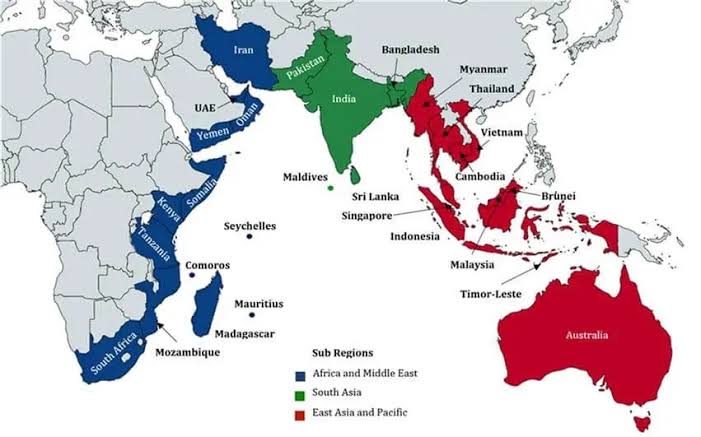
The third largest body of water in the world is the Indian Ocean. The Indian Ocean is sometimes called the “sea of stability.” Indian Ocean is a vital part of international trade and transportation because it moves one third of the world’s bulk cargo traffic and two thirds of the world’s oil shipments. There is a lot of wealth in the Indian Ocean in the form of oil, natural gas, and rocks. Asia and Europe both depend on this area to keep their economies going strong.
Strategic and economic axes are changing in ways that will make the Indo-Pacific and the Indian Ocean Region (IOR) the centre of almost every major power’s attention. But while other countries have only recently started to pay attention to IOR, India has had trade and cultural ties with other countries in the area since the beginning of time. People-to-people interactions, not armed conquest, led to the growth of these ties.
Table of Contents
- 1 How important is the Indian Ocean?
- 2 Economic
- 3 Deep Sea Exploration
- 4 Strategic and Security
- 5 India’s role in the Indian Ocean
- 6 Net Security Provider
- 7 Operations for humanitarian and disaster relief
- 8 Blue Economy
- 9 Diaspora and Exchanges of Culture
- 10 Space Technology
- 11 Indian Ocean Policy
- 12 Regional Groupings in Indian Ocean
- 13 The Indian Ocean Rim Association
- 14 Challenges for India
- 15 Maritime Security (Terrorism, Drug Trafficking, and Pirates)
- 16 The Indian Ocean Region (IOR) and Climate Change
- 17 The presence of China in the Indian Ocean
- 18 Challenge Posed by Pakistan
- 19 Way Forward
- 20 Conclusion
How important is the Indian Ocean?
India, which has the most people in the area and is a key strategic player, has a lot riding on the Indian Ocean basin. India imports almost all of its oil and 90% of its goods by volume. This shows how important the area is.
Economic
• The Ocean is a good place to find minerals and oil. The Indian Ocean area is home to 40% of the world’s offshore oil production. India is also the fourth biggest buyer of liquefied natural gas (LNG). About 45 percent of the LNG that India gets comes by sea.
• The sea lanes in the Indian Ocean are some of the most important in the world from a strategic point of view. They keep Asia’s biggest economies going, including India’s.
Securing Sea Lanes of Communication: There are three major Sea Lanes of Communication (SLOCS) in the Indian Ocean that are very important for energy security and economic growth:
o SLOC connecting the Red Sea to the Indian Ocean through the Bab al-Mandab (which moves most of Asia’s foreign trade with its biggest trading partners in Europe and America),
o SLOC, which connects the Persian Gulf to the Indian Ocean through the Strait of Hormuz and sends most of the energy supplies to places like India, ASEAN, and East Asia, where they are needed.
o SLOC connects the Indian and Pacific Oceans through the Straits of Malacca. This is important for trade between the US, ASEAN, East Asia, and Russia’s Far East.
• Almost 15% of all fishing in the world takes place in the Indian Ocean.
• 75% of the world’s sea trade and 50% of the world’s daily oil use go through the Indian Ocean region.
Deep Sea Exploration
• In 2002, the International Seabed Authority, which is part of UNCLOS, gave India permission to look for precious metals and study the ocean.
• Deep bottom polymetallic sulphides (PMS) are made up of different amounts of iron, copper, zinc, silver, gold, and platinum.
Strategic and Security
• India has about 7500 km of coastline, and a large number of people rely on fishing. So, the security of the area is important for both the safety of the coasts and the growth of the economy.
• The terrorist attack in Mumbai shows how important it is to keep the area safe.
• The region is home to constantly changing strategic events, such as the rise of China and India, US involvement in Iraq and Afghanistan, a possible nuclear showdown between India and Pakistan, terrorism, and piracy in the Horn of Africa and nearby areas.
• Some of the choke places are the Straits of Hormuz, Malacca, and the Bab el Mandeb. These choke places are important for energy and trade around the world. Countries like the United States, France, and others keep ships in the Indian Ocean.
• China’s focus on the Indian Ocean (through its Silk Road project and rising cooperation with the countries along the coast) and the fact that it is building a “blue water navy” make the area more important.
• The US’s “Pivot to Asia” strategy and China’s “OBOR and String of Pearls” have made the area more important from a strategic point of view.
• When Chinese battleships and a submarine docked in Hambantota, it sent a worrying message to India.
India’s role in the Indian Ocean
Indian Ocean is a vital link between India and the countries that are near and far away in the sea. India’s political and economic interests are tied to the Indian Ocean in a way that can’t be broken.
India’s role in the area is clear from its “SAGAR” plan, which stands for “Security and Growth for All in the Region” and means “ocean.”
Net Security Provider
• The Indian Ocean has always been an important part of world policy. Many countries have put down roots in the area to protect their key interests. But India has always been a strong supporter of making the Indian Ocean a Peace Zone.
• India’s new vision for maritime security is fully explained in “Ensuring Secure Seas: Indian Maritime Security Strategy,” a document by the Indian Navy. This document makes it clear that the Indian Navy’s interest areas include the Red Sea, Gulf of Oman, Gulf of Aden, IOR Island nations, Southwest Indian Ocean, and East Coast of Africa littoral countries, among many other nations and areas.
• Piracy and maritime terrorism have become one of the biggest threats to security in the area.
• The Malabar Exercise and other bilateral exercises with countries like Indonesia and re-engaging with the Indian Ocean area (IOR) and South Pacific island nations show that India is ready to play a key role in the area.
• India’s efforts to keep the Indian Ocean safe have already started to show results. The Indian-made patrol ship Barracuda has been sent to Mauritius, P-8I aircraft have been sent to Seychelles to keep an eye on its exclusive economic zone, and agreements have been made to improve the infrastructure in Agalega, Mauritius.
• India’s only “Tri-Service Command” is on the Andaman and Nicobar Islands. It is trying to make its military outpost at the point where the Bay of Bengal meets the Andaman Sea more effective.
Operations for humanitarian and disaster relief
• India has been involved in efforts to help people in need and people who have been affected by disasters. It not only helped Indian people, but it also helped people in other countries.
• For example, India has helped with disaster aid in other countries, including Indonesia and Sri Lanka after the 2004 tsunami, Myanmar and Bangladesh after Cyclone Nargis, and Sri Lanka and Bangladesh after Cyclone Roanu.
• Under “Operation Neer,” India sent “water aid” to the Maldivian city of Male in 2014 after a fire destroyed the generator of the country’s largest water treatment plant.
Blue Economy
• The Ministry of Shipping has started the “Sagarmala Project” to take advantage of the potential of the “blue economy.” This is a strategic plan for port-led growth through the wide use of IT-enabled services to modernise ports.
• The “Blue Economy” is built on using locally available resources and using renewable inputs. This helps solve the problem of not having enough resources and allows for sustainable growth.
• According to Niti Aayog, building a “Blue Economy” can be a growth driver that helps the country reach its goal of having a $10 trillion economy by 2032. “The Blue Chakra on the Indian flag represents the potential of the Blue Economy,” said the country’s Prime Minister.
Diaspora and Exchanges of Culture
• The Ocean of Churn: Merchants and craftspeople who moved to these areas over thousands of years brought their own cultural values and customs with them. The people in the area took these newcomers in as their own, and as a result, they created amazing shared cultures that were not limited by government borders or the control of a single country. Through Pravasi Bharatiya Diwas, the Indian Diaspora in the area is becoming more involved in India’s growth story.
Space Technology
• NavIC means for “Navigation with Indian Constellation.” This is India’s global navigation satellite system that was made by India. The Indian Regional Navigation Satellite System (IRNSS) would help people find their way by land, sea, and air. When NavIC is up and running, it will have major effects on the whole south Asian area. This will help a lot when nature and man-made disasters happen.
• South Asia Satellite, also called GSAT-9: The launch of the satellite will help make communication better;
better government, banking, and education in remote areas; more accurate weather forecasts, monitoring of land, and mapping of resources; connecting people to high-quality medical services through telemedicine; and a quick response to natural disasters in the region.
Indian Ocean Policy
• The Indian Navy put out the India Maritime Security Strategy, which explains the country’s strategy in the Indian Ocean area. It says that India is committed to the following in the area around the Indian Ocean:
Making sure that the Indian Ocean Region is safe, secure, and strong;
Strengthening security cooperation by working with area partners to do more surveillance and monitoring;
Creating a multilateral maritime security plan to fight terrorism and piracy in the Indian Ocean;
Building stronger cultural ties with the people in the area; and
Putting the Indian Ocean Region on the cutting edge of healthy economic growth.
• The Joint Strategic Vision with the US, Japan’s participation in the Malabar Exercise, bilateral exercises with Japan, Australia, and Indonesia, and the signing of Mutual Logistics Support Agreements with the US, France, and Singapore show that India is ready for its important role in the region.
• India’s strategy in the Indian Ocean is based on making sure its “maritime neighbourhood,” which includes the Maldives, Mauritius, Seychelles, and Sri Lanka, is safe and politically stable.
China’s naval and strategic operations in the Indian Ocean are getting bigger and bigger.
• Project Mausam: It would help India reconnect with its old trading partners and create a new “Indian Ocean world” along the coast of the Indian Ocean.
Regional Groupings in Indian Ocean
Regional groups like SAARC, BIMSTEC, ASEAN, GCC in the Gulf, IORA, etc. are well-established in the area.
Indian Ocean Rim Association for Regional Cooperation, also known as Indian Ocean Rim Association (IORA), is focused on the Indian Ocean.
The Indian Ocean Rim Association
• It is an intergovernmental organisation with 23 Member States bordering the Indian Ocean and 10 Dialogue Partners. Its goal is to improve regional cooperation and sustainable development in the Indian Ocean area.
• It was made in 1997, and Mauritius is home to its office.
• The IORA is a regional platform that brings together people from the government, business, and academia to help them work together and get to know each other better.
• It is based on the ideals of open regionalism and aims to improve economic cooperation in the region, especially in the areas of trade facilitation, investment promotion, and social development.
• Australia, Bangladesh, Comoros, France, India, Indonesia, Iran, Kenya, Madagascar, Malaysia, Mauritius, Mozambique, Oman, Seychelles, Singapore, Somalia, South Africa, Sri Lanka, Tanzania, Thailand, United Arab Emirates, Maldives, and Yemen are all members.
• Significance:
Regional cooperation among IORA countries will become more and more important to make sure that important trade routes, especially the choke spots, are safe and secure.
It will help India make sure that ships and planes can move freely in the area.
There will be talks about the Blue Economy and piracy to make sure that the seas are safe and secure.
The IORA is a good multilateral platform that makes it easier for the region to take advantage of untapped possibilities for peace, development, and economic growth.
Challenges for India
The new Indian Maritime Security Strategy (IMSS-2015) explains India’s maritime problems, current maritime practises, changing technological trends, and changing operational posture at sea. India’s security services are worried about the growing threats in the IOR because of recent events in the IOR.
Maritime Security (Terrorism, Drug Trafficking, and Pirates)
• India will have to deal with non-state actors like those who attacked Mumbai in 2008. It will also have to deal with an arc of instability on the iOR periphery, which is where problems like Somali piracy, drug trafficking along the Makran coast, and the ongoing conflict in Yemen, where India ran a successful non-combatant evacuation operation (NEO) in April 2015 called Operation Rahat.
• Both migration and trafficking of people in South and Southeast Asia are on the rise.
For example, the rise in refugees from Bangladesh and Myanmar (known as the Rohingya problem) has caused a humanitarian problem on a scale that has never been seen before.
The Indian Ocean Region (IOR) and Climate Change
• Climate change could cause storm surges to be stronger, more common, and higher in the Indian Ocean. Most people in IOR live in big coastal towns with a lot of infrastructure, like ports and oil refineries, to support them.
In the case of a serious climate crisis, there is a very high chance that coastal infrastructure, such as military docking and shore facilities, will be damaged.
If the water rises, people will lose their jobs, move, and fight, which could lead to a crisis in the area.
Changes in weather trends will have an effect on the monsoon nature of agriculture in India and other countries. This will lead to a loss of yield and stress among farmers.
Warming of the ocean will have an effect on the fishing industry and the coral ecosystem, which a large number of people in the area rely on.
The Alliance of Small Island States (AOSIS) is a group of small island and low-lying coastal countries that have similar economic problems and are vulnerable to the bad effects of global climate change. This group of governments is recognised by the UN. Its members are Comoros, Maldives, Mauritius, and Seychelles.
The presence of China in the Indian Ocean
• China’s aggressive soft power diplomacy has been the most important factor in changing the strategic environment of the Indian Ocean, which has changed the dynamics of the whole area. China has gotten a lot of respect and power from countries in the Indian Ocean region by giving them big loans with easy terms for paying them back, investing in them, helping them with their military, and supporting them politically.
• China has taken Japan’s place as Sri Lanka’s biggest lender. Kenya is another place where
how China has been increasing its power in the Indian Ocean.
• Both the quality and size of China’s submarine and surface forces are growing, and these forces are operating in more places than they used to. A Chinese submarine docks at the Hambantota Port in Sri Lanka.
• China is being bold by being on the Maritime Silk Road and building a Blue Water Navy.
The strategy of expansion will threaten security in the Indian Ocean, just as it has in the South China Sea and the East China Sea.
Challenge Posed by Pakistan
• In 2012, Pakistan set up a Naval Strategic Force Command, which could mean that Pakistan will use nuclear weapons at sea in the future.
• State-backed terrorist groups and other terrorist groups based in Pakistan, like the ones that attacked Mumbai in 2008, use the Indian Ocean to spread their dangerous work.
• Pakistan’s plan to buy at least eight diesel-powered submarines with propulsion systems that don’t need air from China between 2023 and 2028 adds more doubt to this subsurface mix. Having operational control over the port of Gwadar in Pakistan will help China meet the Indian Navy head-on.
Way Forward
• The Indian Ocean Region needs a framework for foreign partnerships that is both stable and open to everyone. India
needs to raise, expand, and deepen its security cooperation with regional partners like Sri Lanka, the Maldives, Seychelles, and Mauritius, as well as the US, Japan, and Australia, to protect its core security interests in the Indian Ocean.
• Even though the Indian navy has recently reached out to smaller island states in the sea, its goal of being a source of internet security is still not fully realised.
• There needs to be a strong push for research and development and innovation in ocean energy, marine biology, and biotechnology in order to get a big part of the market in these areas.
• Keeping the Act East Policy in mind and thinking about what might happen in the Indian Ocean area in the future and
In South-East Asia, the attention should be on developing the islands in Andaman and Nicobar, which are in a strategic place.
• Getting these goals done will take more investments in capacity, more openness and trust-building measures, and better cooperation between institutions.
Conclusion
• People, society, and business are important parts of the Indian Ocean. To help it grow and come back, you need to understand its complicated structure and subtleties. It should be seen as a partner, not as a place to fight.
• Because of this, the stability and growth of the area will depend on how well the littoral countries work together and trust each other.



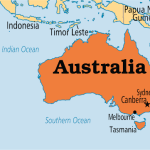

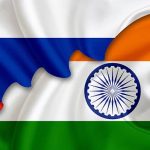

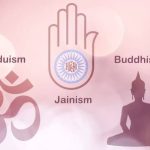

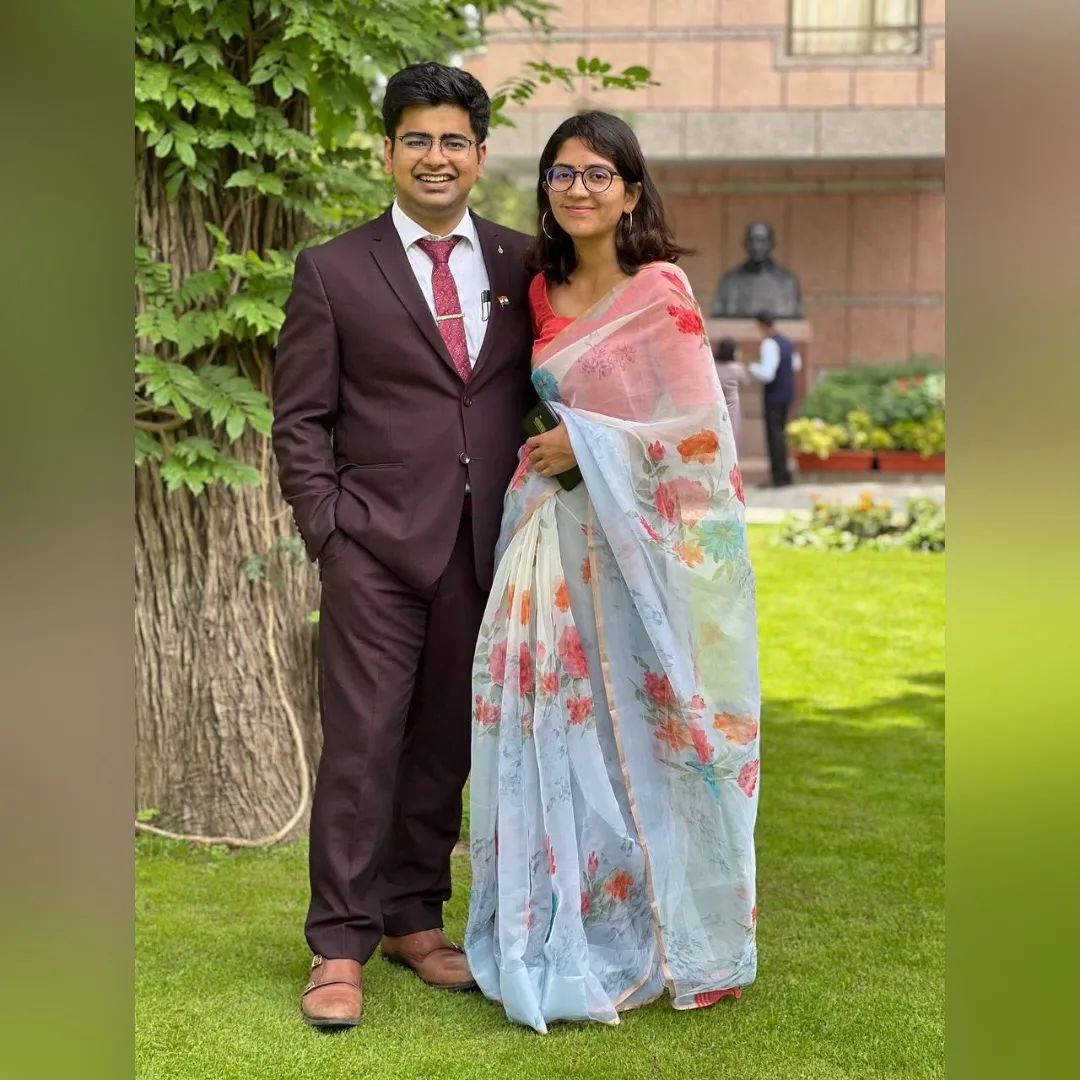
![UPSC CSE Topper Mains Answer [Part 1] images-2023-06-17T191749.185](https://iasbio.com/wp-content/uploads/2023/06/images-2023-06-17T191749.185-150x150.jpeg)


![UPSC CSE Topper Mains Answer [Gaurav Agarwal] word-image-10753-1](https://iasbio.com/wp-content/uploads/2023/06/word-image-10753-1-150x150.png)


